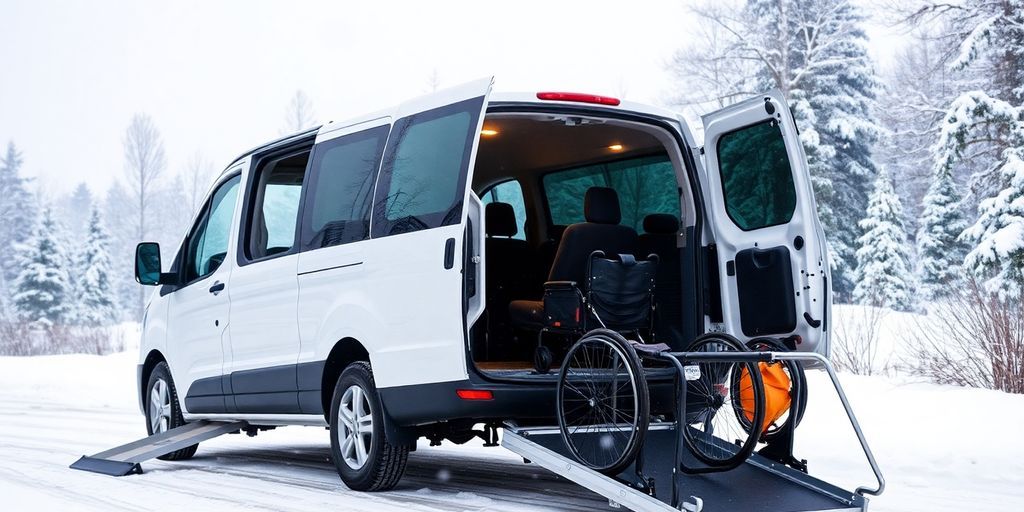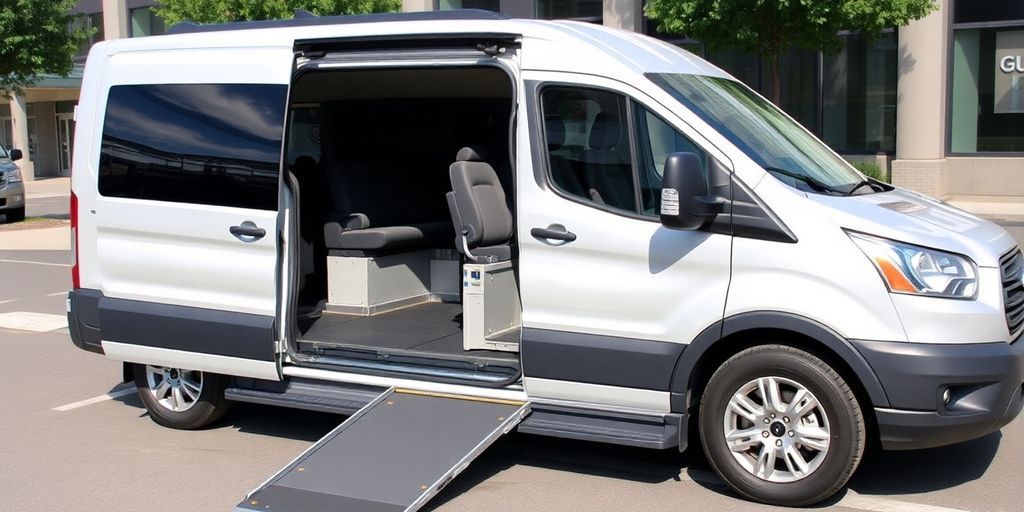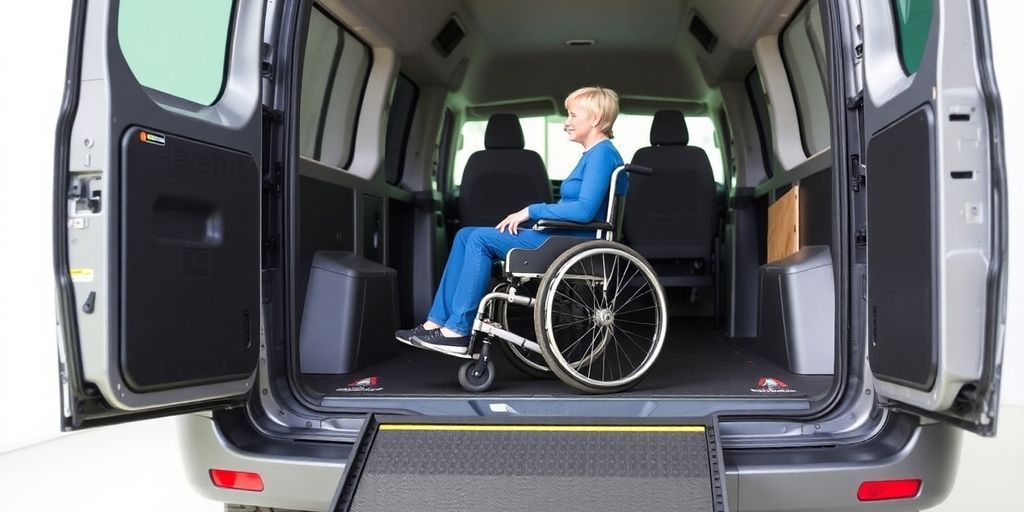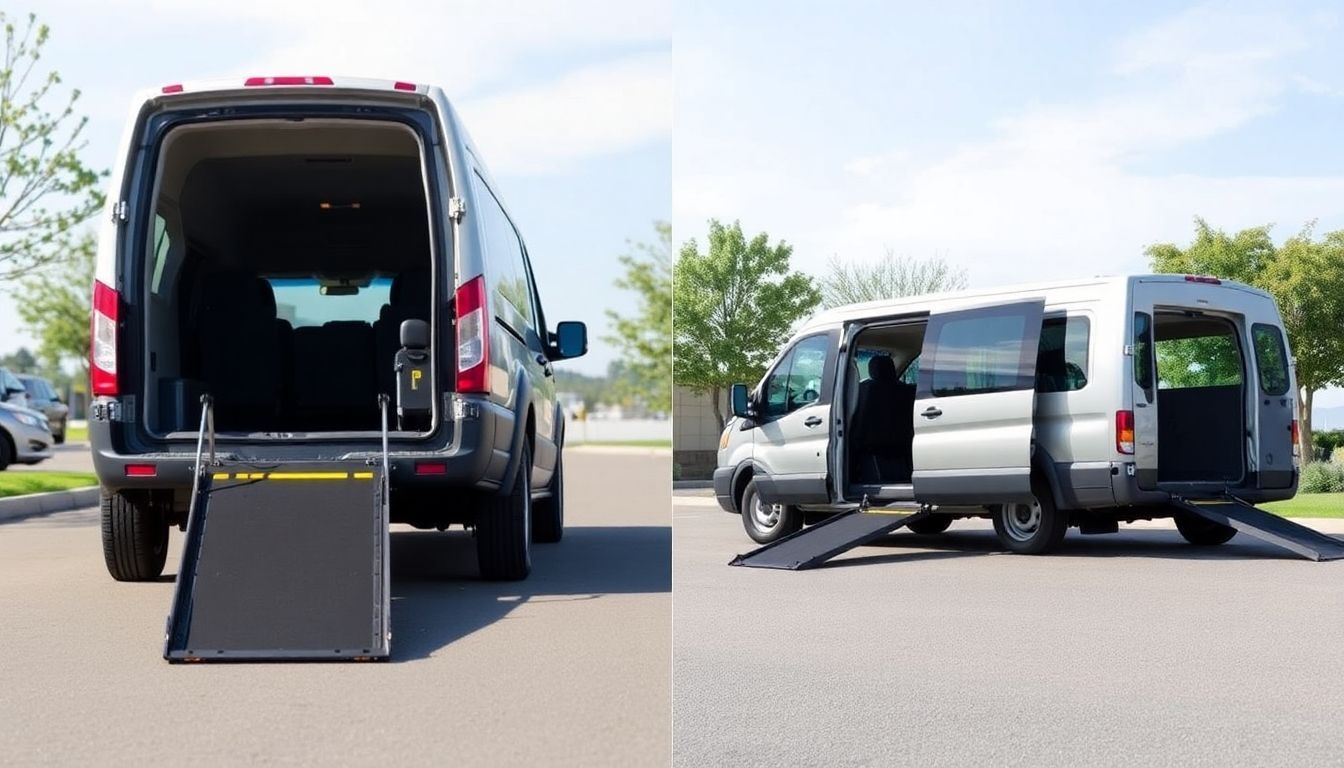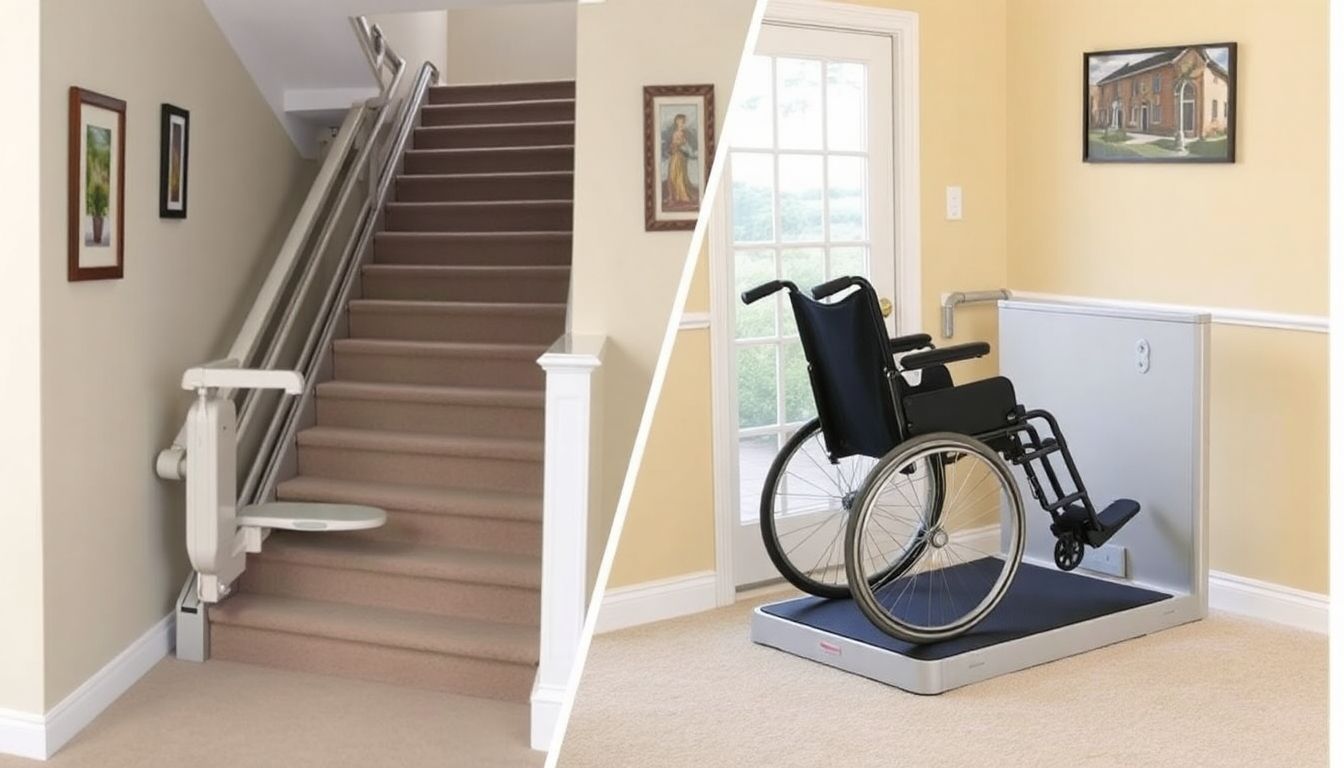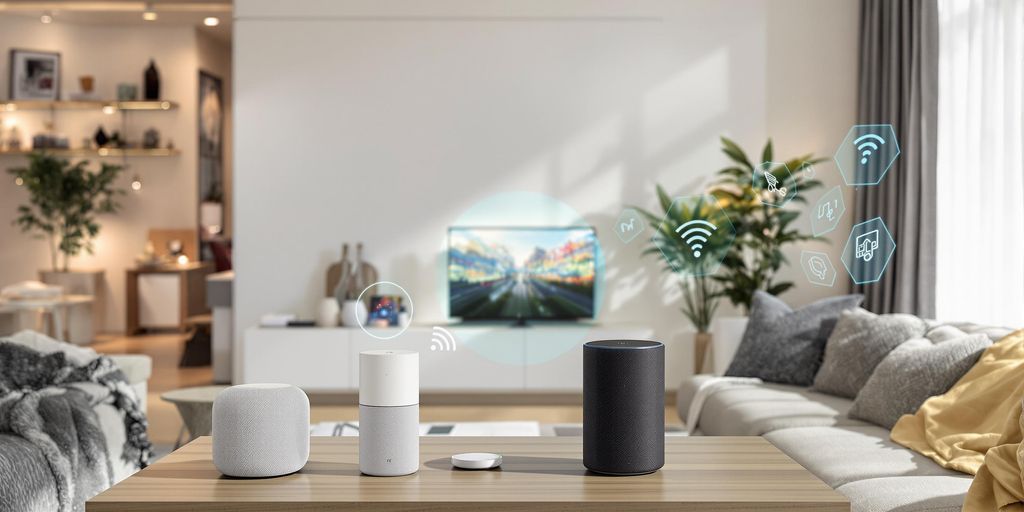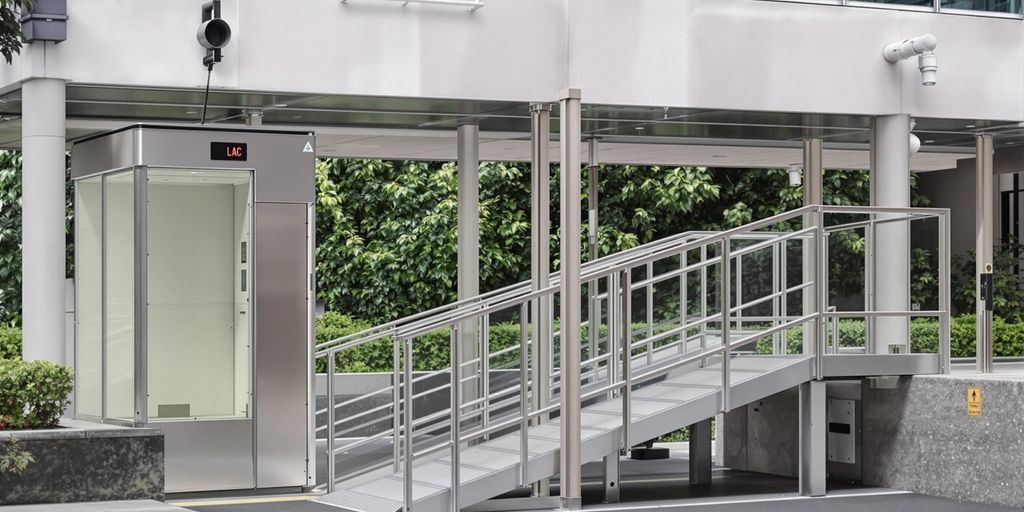Top 10 Mistakes People Make When Buying a Mobility Vehicle (and How to Avoid Them)
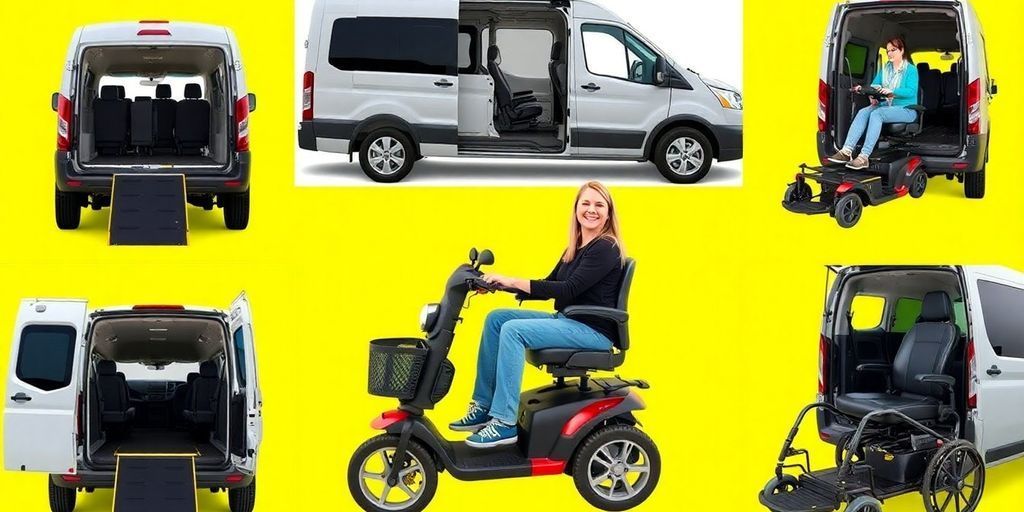
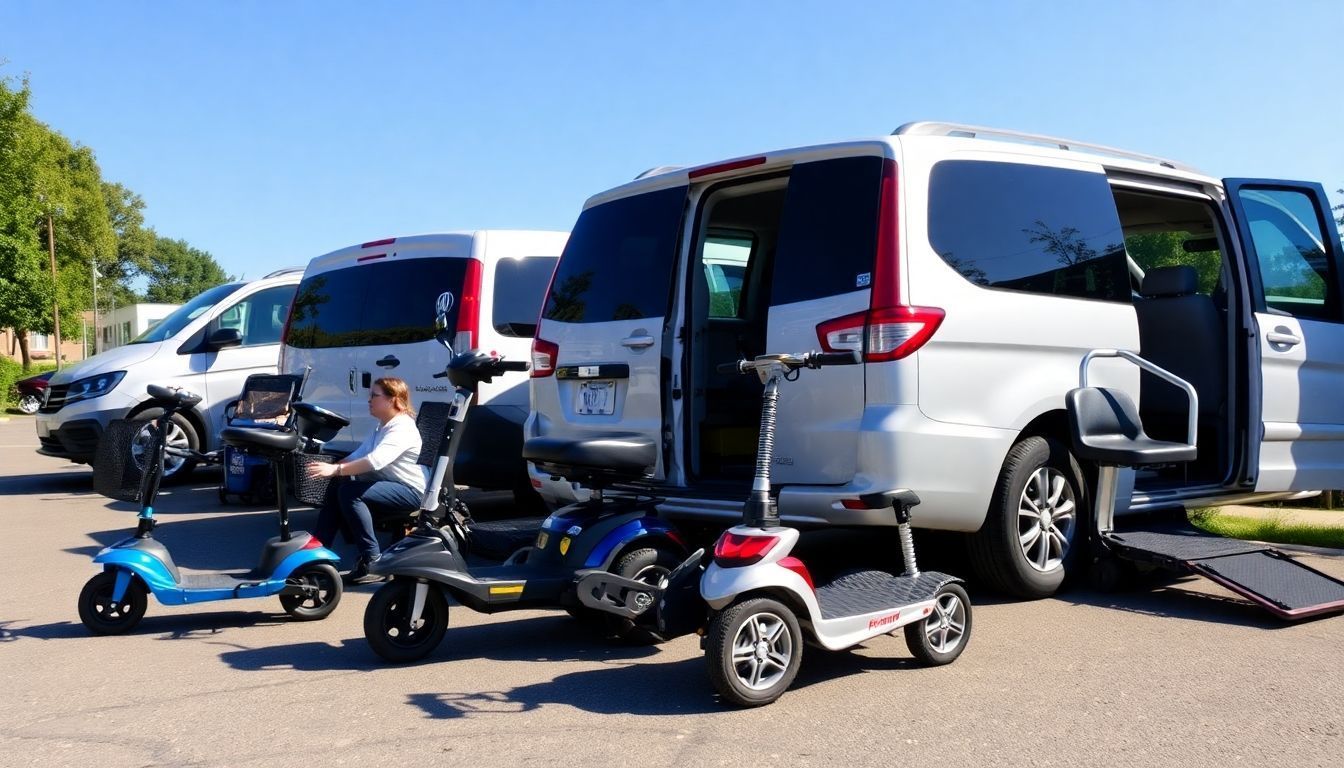
Buying a mobility vehicle can be a big deal, especially if it’s your first time. You want to make sure you get it right, but there are a lot of common mistakes people make that can lead to headaches down the road. From not doing enough research to overlooking important details, these errors can end up costing you more than you bargained for. Here’s a rundown of the top 10 mistakes people often make when buying a mobility vehicle and some tips on how to steer clear of them.
Key Takeaways
- Always buy from a local dealer for better support and service.
- Research the vehicle thoroughly before making a decision.
- Don't just go for the lowest price; consider quality and reliability.
- Avoid DIY repairs unless you're experienced; it can lead to bigger problems.
- Make sure the vehicle fits your specific needs and lifestyle.
1. Not Buying Locally
Okay, so you're in the market for a mobility vehicle. That's great! But before you jump online and click 'buy,' let's talk about why local matters. I get it, online deals can be tempting, but trust me, going local can save you a lot of headaches down the road.
Mobility vehicles, like any machine, need servicing and repairs. When you buy from a local shop, you're not just buying a product; you're building a relationship. Here's why that's important:
- Easier Servicing: Got a problem? Just pop down to the shop. No need to ship anything or deal with complicated return processes.
- Personalized Support: Local dealers know their products inside and out. They can offer tailored advice and support based on your specific needs.
- Community Connection: You're supporting a local business, which in turn supports your community. It's a win-win!
Think of it this way: buying a mobility vehicle isn't like buying a toaster. It's an investment in your independence and well-being. You want someone you can trust to be there for you long after the sale is complete. Plus, buying from another country can cause trouble in the future. Usually, parts for these machines are only available in the country they’re manufactured and assembled in. These electric vehicles are electric, and with time they will eventually need service or repair just like cars. So when you buy a mobility scooter, make sure the parts are easily available to you.
So, do yourself a favor and check out the mobility dealers in your area. You might be surprised at the level of service and expertise you find. For example, North GA Mobility has a storefront business location where you can always go to speak to your mobility specialist and get help.
2. Failing To Do Homework
Okay, so you're thinking about buying a mobility vehicle. Awesome! But before you jump in, you really need to do your homework. Don't just walk into a store and pick the shiniest one. That's a recipe for disaster. There are so many options out there, and what works for your neighbor might not work for you.
Think of it like this: buying a mobility vehicle without research is like trying to bake a cake without a recipe. You might end up with something edible, but chances are it's going to be a mess.
Here's what you should be looking into:
- Different Types: Understand the differences between mobility scooters, power wheelchairs, and wheelchair vans. What are the pros and cons of each?
- Features: What features are important to you? Turning radius? Battery life? Weight capacity? Don't just assume they all have the same capabilities. Check the product specifications.
- Modifications: If you need modifications, like a lift or hand controls, consult with experienced modifiers. There are wide disparities in the quality and suitability of mobility modifications. You want to be sure your needs are met appropriately.
- Reviews: Read reviews! See what other people are saying about different models and brands. Look for common problems or praises. This can give you a realistic expectation of what to expect.
Failing to do your homework can lead to buying a vehicle that doesn't meet your needs, is uncomfortable, or even unsafe. Take the time to research, ask questions, and make an informed decision. It's an investment in your independence, so treat it like one!
3. Buying On Price Alone
It's tempting to hunt for the absolute lowest price when you're buying a mobility vehicle. I get it. These things can be expensive! But focusing solely on price can be a huge mistake. You might end up with a vehicle that doesn't meet your needs or, worse, is unreliable.
Think about it this way:
- A cheaper vehicle might have fewer features that are actually important for your comfort and independence. For example, you might miss out on essential safety features.
- Lower price could mean lower quality components. This can lead to more frequent repairs and higher maintenance costs down the road. Don't forget to check the vehicle history report!
- The cheapest option might not be the right type of vehicle for your specific needs. A scooter might be cheap, but is it really going to work for your lifestyle?
It's better to think of your mobility vehicle as an investment in your quality of life. Spending a little more upfront for a reliable and well-suited vehicle can save you money and frustration in the long run. Consider the total cost of ownership, not just the initial price. You should also consider buying from a reputable source.
4. Uncle Bob Repairs
We've all got that one relative, right? The one who's convinced they can fix anything. And while Uncle Bob might be great at backyard barbecues, letting him tinker with your mobility vehicle is often a recipe for disaster. Mobility vehicles are complex pieces of equipment, and specialized knowledge is needed for repairs.
Think about it this way: you're trying to save a few bucks, but you might end up costing yourself way more in the long run. Here's why:
- Voided Warranties: Unqualified repairs can void your warranty faster than you can say "duct tape."
- Safety Concerns: Improper repairs can compromise the safety features of your vehicle, putting you at risk.
- Increased Costs: A professional shop will likely have to fix both the original problem and whatever Uncle Bob tried to do.
It's tempting to go the DIY route, especially when money is tight. But when it comes to your mobility, it's best to leave it to the pros. You're not just fixing a vehicle; you're maintaining your independence. Consider the long-term implications of a botched repair job.
Instead of risking it, find a reputable repair shop that specializes in mobility vehicles. Look for certified technicians and a shop with good reviews. It's an investment in your safety and the longevity of your wheelchair accessible vans.
5. Ignoring Vehicle Compatibility
It's easy to get caught up in the excitement of buying a mobility vehicle and forget a pretty important detail: will it actually work with your current vehicle? Not all mobility solutions are created equal, and what fits in your neighbor's SUV might not work in your sedan. This isn't just about physical space, but also about weight capacity, connection points, and electrical systems.
Here's what you need to think about:
- Lift Compatibility: If you're planning on using a lift to transport your scooter or powerchair, make sure the lift is compatible with both your mobility device and your vehicle. Check the scooter lift's compatibility specifications carefully.
- Ramp Angle: If you're using a ramp, consider the angle. A steep ramp can be difficult or even dangerous to navigate, especially for users with limited upper body strength.
- Tie-Down Points: Ensure your vehicle has adequate and properly installed tie-down points to secure the mobility device during transport. Improperly secured devices can shift during transit, posing a serious safety risk.
Ignoring vehicle compatibility can lead to a lot of frustration and wasted money. Imagine buying a lift only to find out it can't be installed, or purchasing a scooter that's too heavy for your vehicle's suspension. Do your homework and avoid these costly mistakes.
It's also worth considering the long-term implications. Will your mobility needs change in the future? Will you need a different type of vehicle to accommodate those changes? Planning ahead can save you a lot of headaches down the road.
6. Overlooking Warranty Options
It's easy to get caught up in the excitement of buying a mobility vehicle and completely forget about the warranty. But trust me, you don't want to skip this step. A solid warranty can save you a ton of money and stress down the road.
Think of it like this: you're investing in your independence, and a warranty is like an insurance policy for that investment. Mobility vehicles have a lot of moving parts, and things can break down. Here's why you should pay attention to warranty options:
- Peace of mind: Knowing you're covered if something goes wrong is a huge relief.
- Cost savings: Repairs can be expensive, especially for specialized equipment.
- Protection against defects: Warranties cover manufacturing flaws that you might not notice right away.
Don't be afraid to ask a lot of questions about the warranty. What's covered? What's not? How long does it last? Understanding the details can prevent unpleasant surprises later on. Read the fine print, and if something is unclear, get it clarified before you sign anything.
7. Skipping Test Drives
Okay, so you've found a mobility vehicle online that looks amazing. The specs are perfect, the color is just what you wanted, and the price seems right. But hold on a second! Don't even think about clicking that "buy" button without first taking it for a spin. Seriously, skipping the test drive is a huge mistake.
A test drive isn't just a formality; it's your chance to see if the vehicle actually fits your needs and lifestyle. You wouldn't buy shoes without trying them on, would you? Same principle here.
Think about it. You need to consider:
- How does it handle on different surfaces?
- Is it easy to maneuver in tight spaces?
- Are the controls intuitive and comfortable to use?
- Can you easily transfer in and out of the vehicle?
A test drive can reveal potential issues that you wouldn't discover just by looking at pictures or reading descriptions. It's about more than just the specs; it's about the feel of the vehicle and how it integrates into your daily life. Make sure you check out the vehicle's performance before making a purchase.
8. Neglecting Maintenance Costs
It's easy to get caught up in the initial price tag of a mobility vehicle, but don't forget about the long-term costs! Just like any vehicle, mobility vehicles require regular maintenance to keep them running smoothly and safely. Ignoring these costs can lead to some serious financial headaches down the road.
Here's what you need to consider:
- Regular servicing: Plan for routine check-ups to catch small problems before they become big, expensive ones. Think of it like taking your car in for an oil change – it's a necessary expense that prevents bigger issues.
- Battery replacement: Batteries don't last forever. Budget for replacements every few years, depending on the type of battery and how often you use your vehicle. Using low-cost lawn-mower batteries is a mistake.
- Repair costs: Even with regular maintenance, things can still break down. Having a repair fund can save you from unexpected financial strain.
It's a good idea to research the typical maintenance costs for the specific type of mobility vehicle you're considering. Talk to other owners or local dealers to get a realistic estimate of what you can expect to pay over the lifespan of the vehicle. This will help you budget accordingly and avoid any unpleasant surprises.
Don't let maintenance costs catch you off guard. Plan ahead, and you'll be able to enjoy your mobility vehicle for years to come. Regular wheelchair van maintenance is key.
9. Underestimating Size Requirements
It's easy to get excited about a mobility vehicle and forget about the practical stuff, like, will it actually fit where you need it to? This is a big one, because a vehicle that's too large can create a ton of problems.
- Think about doorways in your home. Will you be able to navigate through them easily?
- What about ramps or lifts? Are they wide enough and strong enough to handle the vehicle?
- Don't forget storage! Where will you keep it when it's not in use?
I remember when my neighbor got a new scooter, and it was awesome... until he tried to get it into his apartment. The doorway was just a couple of inches too narrow, and he had to go through a whole ordeal to get it modified. Save yourself the headache and measure everything beforehand!
10. Choosing The Wrong Type Of Vehicle
It's easy to get caught up in the excitement of buying a mobility vehicle and forget to consider if it truly fits your needs. Selecting the wrong type can lead to frustration and a vehicle that doesn't actually improve your mobility. It's like buying a truck when you need a minivan – it might be cool, but it won't haul the kids and groceries very well.
Here's what to keep in mind:
- Consider your lifestyle. Are you mostly indoors, or do you enjoy outdoor adventures? This will influence whether you need something compact and maneuverable or something rugged and all-terrain.
- Think about your physical abilities. Can you easily transfer in and out of a vehicle? Do you need a ramp or a lift? Wheelchair accessible vans can be a great option.
- Don't forget about storage. Where will you keep the vehicle when it's not in use? Will it fit in your garage or apartment?
Taking the time to assess your specific needs and circumstances will help you avoid buyer's remorse and ensure you end up with a mobility vehicle that truly enhances your independence and quality of life. It's an investment in your freedom, so make it a smart one.
It's better to spend a little more time upfront to get it right than to be stuck with something that doesn't work for you.
Choosing the wrong vehicle can lead to a lot of problems. It’s important to pick a car that fits your needs, whether it’s for daily driving, family trips, or off-road adventures. Don’t rush into a decision! Take your time to research and find the right match for you. For more tips on selecting the perfect vehicle, visit our website today!
Wrapping It Up
Buying a mobility vehicle can feel overwhelming, but it doesn’t have to be. By steering clear of the common pitfalls we talked about, you can make a smarter choice that fits your needs. Remember, take your time, do your research, and don’t hesitate to ask for help if you need it. Whether it’s checking out local dealers or getting advice from folks who know their stuff, a little effort goes a long way. In the end, you want a vehicle that gives you freedom and peace of mind, so make sure you get it right the first time.
Frequently Asked Questions
Why should I buy a mobility vehicle locally?
Buying locally helps you build a relationship with the dealer, making it easier to get service and repairs when needed.
What kind of research should I do before buying?
Look into different types of mobility vehicles, read reviews, and understand your specific needs to make a better choice.
Is it okay to choose a vehicle just because it’s cheap?
No, focusing only on price can lead to poor quality. Sometimes paying a little more means getting a much better vehicle.
Can I let a friend or family member fix my mobility vehicle?
It’s best to avoid this. Amateur repairs can make problems worse and cost more to fix later.
What if the vehicle I want doesn’t fit my needs?
Make sure to check if the vehicle is compatible with your requirements, like size and features, before buying.
How important are warranties when buying a mobility vehicle?
Warranties are very important as they can save you money on repairs and give you peace of mind.
First Responders & Military Discount + VA Approved
PRODUCTS AND SERVICES
North Georgia Mobility | All Rights Reserved | Powered By Flypaper | Privacy Policy

